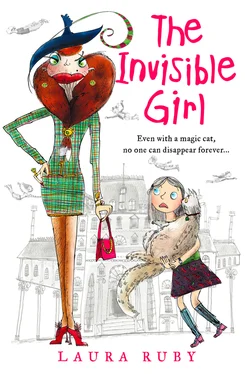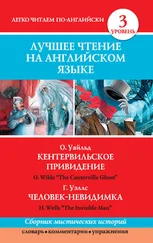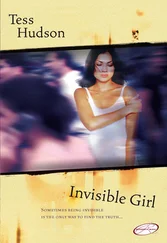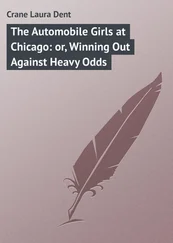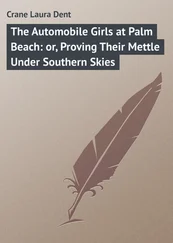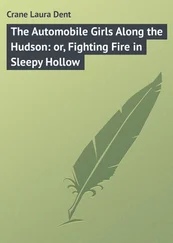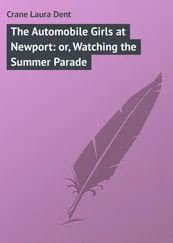As always, Gurl finished her work quickly and then stared out of the window or watched the other students. Preoccupied by the fact that she might have disappeared like a phantom the night before, and by the cat that she hoped was still sleeping in a box underneath her bed, she didn’t notice the new boy until biology. Gurl was particularly bored in biology because they never learned about any animals except birds (with the occasional bat or flying squirrel thrown in). And while Gurl liked birds well enough, she hated it that everyone else worshipped them just because they could fly. Just once Gurl wanted to learn about a wolf or a salmon or a salamander or an ant. “An ant can lift ten times its own body weight,” Gurl had once timidly told her teacher, Miss Dimwiddie, hoping that maybe she might do a lesson on something else. Miss Dimwiddie had barked, “Birds eat ants for lunch.”
This morning Miss Dimwiddie began with the same question she always began with: “Who wants to tell me about the bumblebees?”
“Bumblebees!” echoed Fagin, Miss Dimwiddie’s parrot, who perched on Miss Dimwiddie’s shoulder.
Persnickety’s hand shot into the air. Since it was the only hand to shoot into the air, Miss Dimwiddie said, “Yes, Persnickety.”
“Bumblebees shouldn’t be able to fly,” Persnickety said, knotting her hands on the top of her desk. “Their bodies are too big and their wings are too small.”
“Yes, Persnickety, that’s absolutely right.”
“Absolutely right,” croaked Fagin.
“Now, children, I want you all to remember that. Bumblebees look as if they’d be too heavy to fly and yet scientists have discovered that they beat their wings in circles to create lift. Now, none of you look like you can fly either, but you must all be like the bee. You children can use the bumblebee to inspire you to great heights. All right?”
She smiled, waiting for the students to agree, but the room was silent. Miss Dimwiddie cleared her throat. “Well then. Today we’re going to talk about the blue-footed booby.”
“Blue-footed booby,” parroted Fagin.
The class sniggered and Miss Dimwiddie put her hands on her ample hips. “Does someone want to tell me what’s so funny?” Ruckus, always the first to cause a ruckus, shouted, “You said ‘booby’.”
“You’re the booby,” said Fagin.
Ruckus’s tiny black braids, sticking up from his head like caterpillars reaching for a leaf, shook. “Shut up, you dumb bird.”
Fagin flapped his wings. “Booby head. Worm head.”
Miss Dimwiddie continued as if she hadn’t heard. “I want you all to turn to page eighty-nine in your textbooks. You will see a photograph of the blue-footed booby. Note its distinctive powder-blue feet.”
“Powder-blue feet,” Fagin crowed.
“The blue-footed booby lives on the Galapagos Islands,” said Miss Dimwiddie. “The blue feet play an important part in their mating rituals.” Again she had to ignore a lot of snickering. “The male booby initiates the mating dance by raising one foot and then the other. Like this…” Miss Dimwiddie raised one foot then the other, delicately pointing her toes as they touched the ground. On her shoulder, Fagin did the same.
“See?” said Miss Dimwiddie. “Blue foot, blue foot. Blue foot, blue foot.”
The class bit their knuckles to stifle their laughter. Except for one person, who laughed out loud. Gurl turned to look. In the back of the room was a new boy that Gurl hadn’t noticed before. This was unusual, the not noticing, and because of it Gurl watched him all the more closely. He was broad-cheeked and broad-shouldered, with large, wide-set blue eyes that made him look a bit like a praying mantis. He noticed Gurl noticing him and he raised his eyebrows. She looked away, feeling her face grow hot. (She hated to be noticed noticing.)
Miss Dimwiddie stopped blue-footing about. “That’s enough!” she said sternly. “These are birds we are talking about and they deserve your respect. Birds can fly. Now, correct me if I’m wrong, but none of you can fly as well as a bird, can you?” She cast her icy eyes around the room. “Can any of you fly as well as a bird? And isn’t that why we learn about birds, to learn about flying?”
Fagin squawked. “No feathers. No wings. No crackers for you.”
“There there, Fagin,” said Miss Dimwiddie, patting the bird on the head. “I’ll have you know that the blue-footed booby is one of the most spectacular hunters in the bird kingdom. These birds actually stop in mid-flight and drop into a headlong dive into the ocean from heights of eighty feet.”
The praying mantis boy snorted. “Nathan Johnson has flown higher than that and he isn’t a bird.”
Miss Dimwiddie narrowed her eyes. “Excuse me?”
“Nathan Johnson,” said the boy. “He’s the Wing who won the Flyfest three years running. He can fly ten storeys in the air, go into a free fall and stop two feet before he hits the ground.”
“Really?” said Miss Dimwiddie. “How informative.”
“Ugly boy,” Fagin crowed. “Stupid boy.”
Miss Dimwiddie smiled. “You’re new. Have you gotten your name yet?”
“No,” said the boy. “But I like to call myself—”
Miss Dimwiddie cut him off. “So you admire Nathan Johnson?”
“Yeah,” said the boy. “Doesn’t everyone?”
The students started whispering, much to Miss Dimwiddie’s annoyance. “I admire birds,” said Miss Dimwiddie. “They are the true Wings.”
Mantis Boy scowled. “I still think Nathan Johnson is the best Wing we’ve ever had.”
“Let me guess,” said Miss Dimwiddie. “You’re going to be just like him one day.”
The boy’s scowl got even deeper. “So what if I am?”
“We’ll see about that,” Miss Dimwiddie told him. “At Wing practice you can show everyone at Hope House that you’re better than birds. I’m sure you’ll put on a spectacular show.” She clapped her hands together. “Now let’s turn to the next chapter. Can anyone tell me why crows like shiny objects so much?”
The boy crossed his arms across his chest and stared at Miss Dimwiddie as if he wanted to take a shiny object and thwack her in the head with it. Gurl wished he would, as it could keep them both from talking about birds and about flying. Gurl was so sick of hearing about flying. What was so great about it anyway? What was the point?
She looked down at her hands and tried to convince herself that she was more special because she couldn’t fly. Being a leadfoot made her watchful and patient. It had got her out of Hope House. It had got her a fabulous dinner. And, most importantly, it had got her the cat.
The cat!
After class, Gurl rushed back to the girls’ dorm. She got down on her knees and pulled the box out from under her bed—just enough so that she could see inside, but not far enough that any of the other girls could. The little cat was still there, curled in a tight ball. Gurl breathed a sigh of relief, thankful that the cat hadn’t disappeared.
No, you’re the one who disappears , she thought. But of course that couldn’t be true.
The cat rolled over and stretched, letting Gurl scratch its belly. She didn’t even know this cat and it wasn’t hers, but she already loved it more than she had ever loved anything else. If a tree falls in a forest, and no one is around, she thought, does it make a sound?
And then she thought: Yes. It purrs.
Chapter 3 The Chickens of Hope House
DAYS PASSED AND GURL WAS more and more convinced that though the cat was real, vanishing had been a trick of the light or of her imagination. Every morning, Gurl got up, put the little cat in the box under her bed and warned her to stay put. Remarkably, she did stay, sleeping all day only to wake up to the bits of food Gurl had saved from that night’s dinner. (For some reason, the cat never seemed to need a litterbox and never left a mess. Gurl was too grateful to think about it.) Every night, the little cat sprawled across Gurl’s feet, purring strongly enough that Gurl felt the vibrations all the way up into her heart. Though she felt guilty that the cat was trapped under the bed all day, Gurl told herself that it was only for a while and that eventually she would let the cat go.
Читать дальше
